Borax is often confused with boric acid. Until this morning, I was also confused. When I wrote this guide to use borax for roach control, I used borax and boric acid interchangeably. But borax isn’t the same as boric acid.
Thankfully, a reader corrected me. Here’s what I’ve learned in my research about these two common materials. In this guide, I’ll cover the differences between boron, borax, and boric acid. And how to use these compounds for insect control.
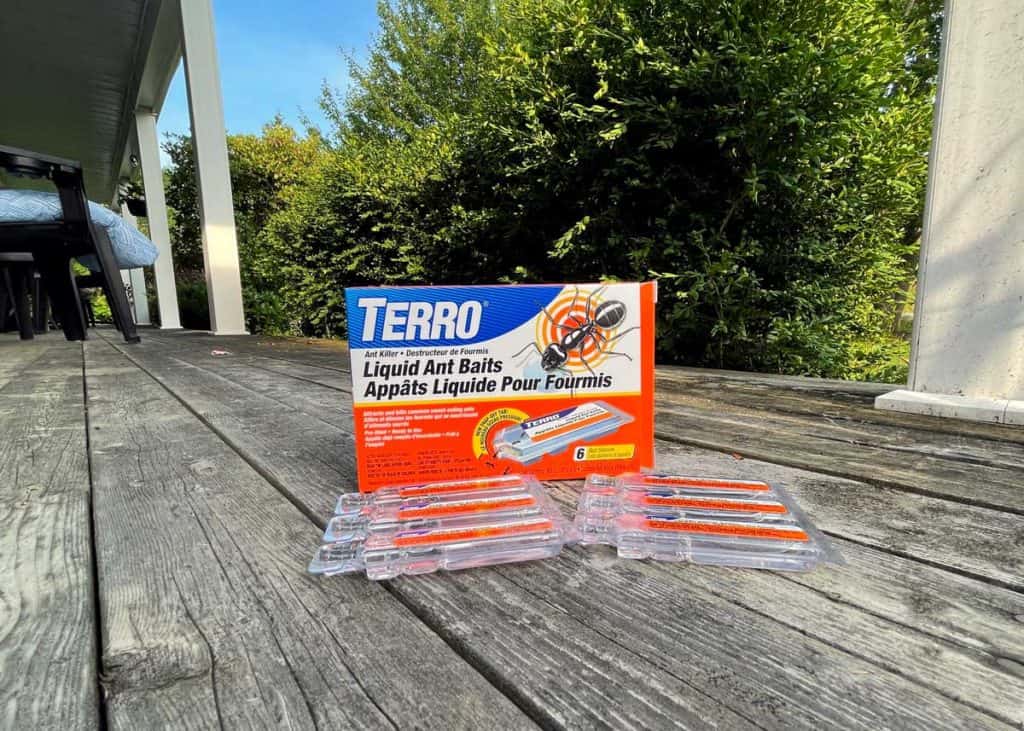
Table of Contents
Borax vs Boric Acid
Borax and boric acid are distinct formulations of the same compound. Borax is a naturally mined crystalline solid used in cleaning and insect control. Boric acid is also naturally occurring and used in similar applications. Both borax and boric acid contain the element boron (B).
Both borax and boric acid will dissolve in water. And both are toxic when ingested.
Boric acid and borax are easily confused because they contain the same compound – the chemical element boron. They differ in their chemical makeup, potency, efficiency in insect control, and applications.
Here’s more about these three unique materials: boron, borax, and boric acid.
1. What is Boron?
Boron is a chemical element represented by the atomic number 4 and the symbol B.
In its crystalline form, boron has a shiny, metallic appearance (lustrous metalloid). Boron compounds include boric acid, boron carbide, boron nitride, borax, and sodium borate.
Boron applications: in addition to the uses noted below, boron is used in boronated fiberglass, elemental boron fiber (fishing rods, golf clubs, aerospace materials), and borosilicate glass. Boron is also used in nuclear reactors and pharmaceutical applications.
Here’s more about these two common boron compounds: borax vs boric acid.
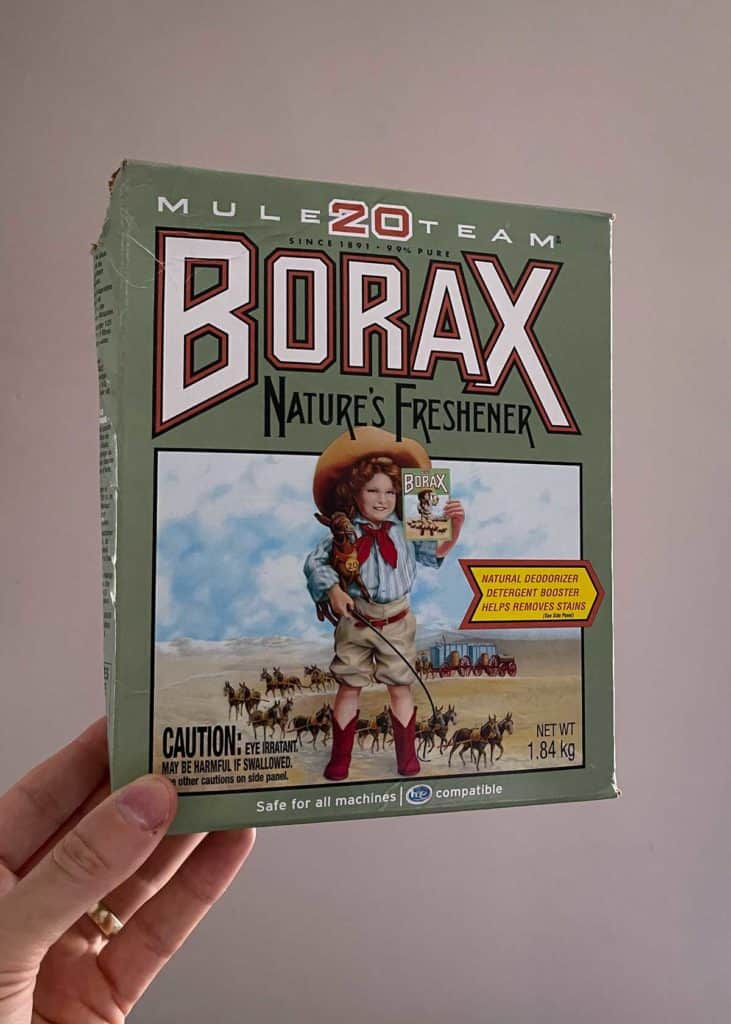
2. What is Borax?
Here’s a quick overview of borax and how it’s used.
- Borax Chemical Formula: Na2H20B4O17
- Contains sodium (Na), hydrogen (H), boron (B), and oxygen (O).
- Borax is also known as sodium tetraborate decahydrate, sodium borate decahydrate, and sodium borate.
- Native borax, mined from dry lake beds in Asia is sometimes referred to as tincal (tinkle) and tincar (tinker).
- Popular brands of borax are 20 Mule Team and Milliard.
Borax Applications:
- Cleaning (laundry and hand soap)
- Slime (flubber and Elmer’s glue)
- Gold mining
- Ant and roach control
- Water softening agent
Borax is naturally occurring in California (Boron and Searles Lake), Turkey. Deposits have also been discovered in Chile (Atacama desert), Bolivia, Romania, and Tibet.
Borax can also be artificially synthesized.
Borax has a long history of use by humans, dating back more than 4000 years.
Borax was the first of the boron (B) minerals to be traded by the Babylonians more than 4000 years ago for use in the working and welding of gold. Borax has been known as a cleaning agent since the days of the ancient Greek and Roman empires and was used as a food preservative in Europe and America, although its use for the latter purpose has been discontinued.
Eisler’s Encyclopedia of Environmentally Hazardous Priority Chemicals
3. What is Boric Acid?
Here’s a quick overview of boric acid and how it’s used.
- Boric Acid Chemical Formula: B(OH)3
- Contains boron (B), hydrogen (H), and oxygen (O).
- Boric acid is also known as orthoboric acid, hydrogen borate, and boracic acid.
Boric Acid Applications:
- Industrial (glass production, welding flux)
- Insecticidal (cockroaches and ants)
- Medical (antiseptic, eye wash)
- Preservation (wood treatment, curing animal skins)
- Lubrication (on ceramic and metal surfaces)
Boric acid is often refined and processed before use. But it does exist naturally, as the mineral sassolite. Sassolite is found in Italy (Tuscany and the Aeolian Islands) and Nevada, United States.
How Boric Acid Works
Boric acid kills insects in two ways. And there is a trickle-down effect.
- Internally: In the stomach, boric acid is a stomach poison, and affects the metabolism of the insect.
- Externally: Boric acid powder is abrasive to their exoskeleton. This doesn’t kill them immediately, but over a period of a few days, it slowly shreds their bodies.
Because boric acid doesn’t kill insects immediately, they often make it back to their nest to die. This allows more roaches to be exposed to the powder. Both externally by contact. And by their cannibalistic consumption of their dead co-workers. This allows the same powder to kill multiple insects.
No wonder boric acid is known as “the gift that keeps on killing.”
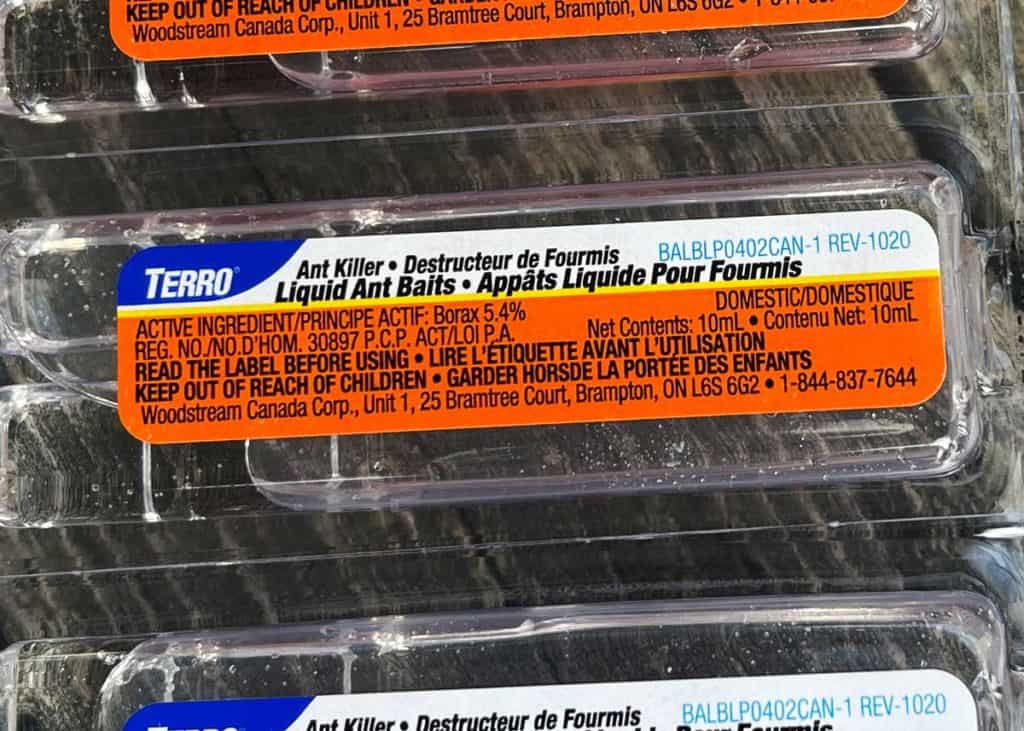
What Insects Boric Acid Will Kill
Boric acid is a recommended insecticide for cockroaches and ants. For insects to be affected by boric acid, they’ll have to walk through it or consume it.
Ingested boric acid will kill any arthropod, including insects, spiders, millipedes, and ticks. But the challenge is to get them to eat it.
Insects that are affected by boric acid.
- Cockroaches. This is a massive category. There are more than 4,600 types of cockroaches.
- Ants. Boric acid is especially effective on ant colonies. It is a common ingredient in the bait of ant traps. Use boric acid to kill carpenter ants and sugar ants.
- Silverfish
If insects groom themselves (or others in the colony) then boric acid is especially effective. When they remove the boric acid dust, they end up ingesting it. This quickly kills them.
Boric acid can devastate insect colonies that groom each other. While grooming ants are helpful when managing a fungal infection, it can prove deadly if they have walked through a dusting of boric acid.
Getting back to the colony, their grooming will spread the powder among the population. With the consumption of fine powder, it’s a matter of time before they die.
Insects Boric Acid Won’t Kill
Insects that have distinct food sources and don’t groom themselves won’t be affected by boric acid. They may never even come into contact with it.
Here are some common insects and arthropods that won’t be affected by boric acid:
- Spiders
- Millipedes
- Ticks
- Mites
- Bed bugs
- Lice
- Moths
- Flies
- Bees, wasps, hornets. While they have an exoskeleton, it is unlikely that bees will come into contact with boric acid. Here’s a discussion by a group of bee masters about boric acid.
If there were a way to get them to consume boric acid, it would work. But this is the challenge.
Spiders, centipedes, and ticks are unlikely to ingest boric acid for two reasons.
- They have a distinct food source. If the arthropod doesn’t take the bait, it also won’t consume the boric acid. Spiders, mites, and ticks eat a liquid diet – and are unlikely to encounter crystallized boric acid in their food sources.
- They don’t groom themselves. This is a primary distribution method of boric acid. The insects affected by boric acid walk through the dust, then clean it off later, consuming it in the process. If they are a species that doesn’t groom themselves, this method won’t work.
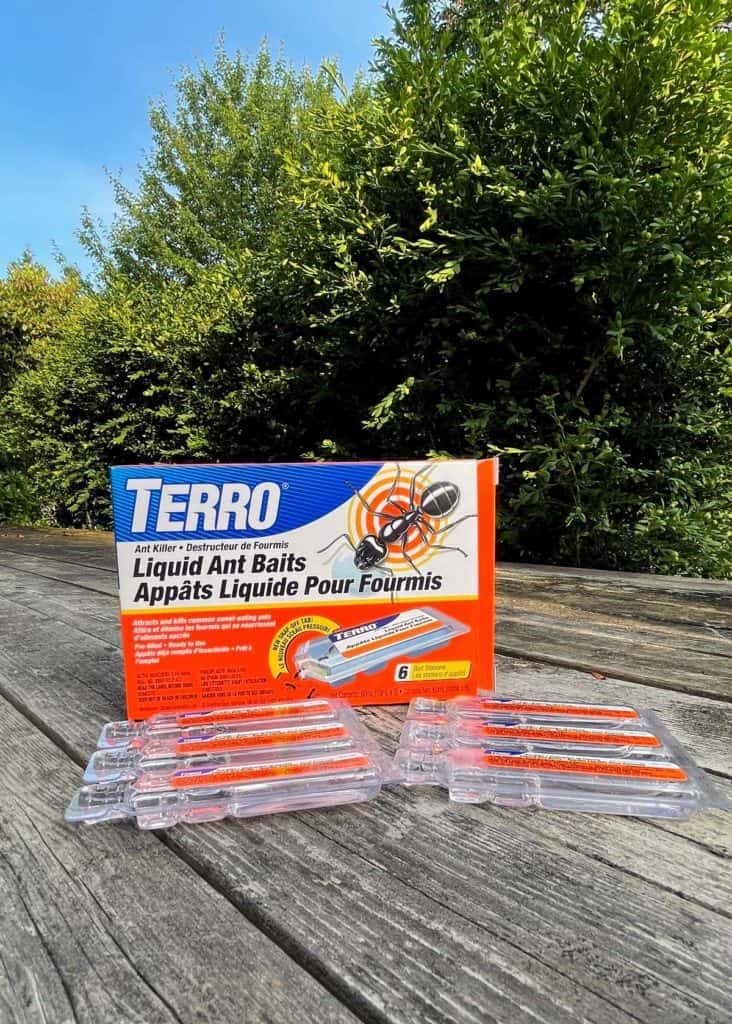
Which is a Better Insecticide: Borax or Boric Acid?
The most effective insecticide will contain boric acid. While borax will work in some applications, you’ll have better results with boric acid. You’ll find boric acid in many insecticides and pesticides.
Some commercial insect killers contain borax instead of the more common boric acid. The one pictured has a borax content of 5.4%. It is suspended in a clear bait liquid meant for ingestion by the ants.
Boric Acid Safety
Here are a few safety warnings for borax and boric acid.
Boric acid is a dangerous poison. Poisoning from this chemical can be acute or chronic. Acute boric acid poisoning usually occurs when someone swallows powdered roach-killing products that contain the chemical. Boric acid is a caustic chemical. If it contacts tissues, it can cause injury.
MountSinai.org
Borax should not come into contact with your eyes or mouth. It is considered an eye irritant and may be harmful if swallowed. As with all household products, borax should be kept out of reach of children.
20 Mule Team Laundry
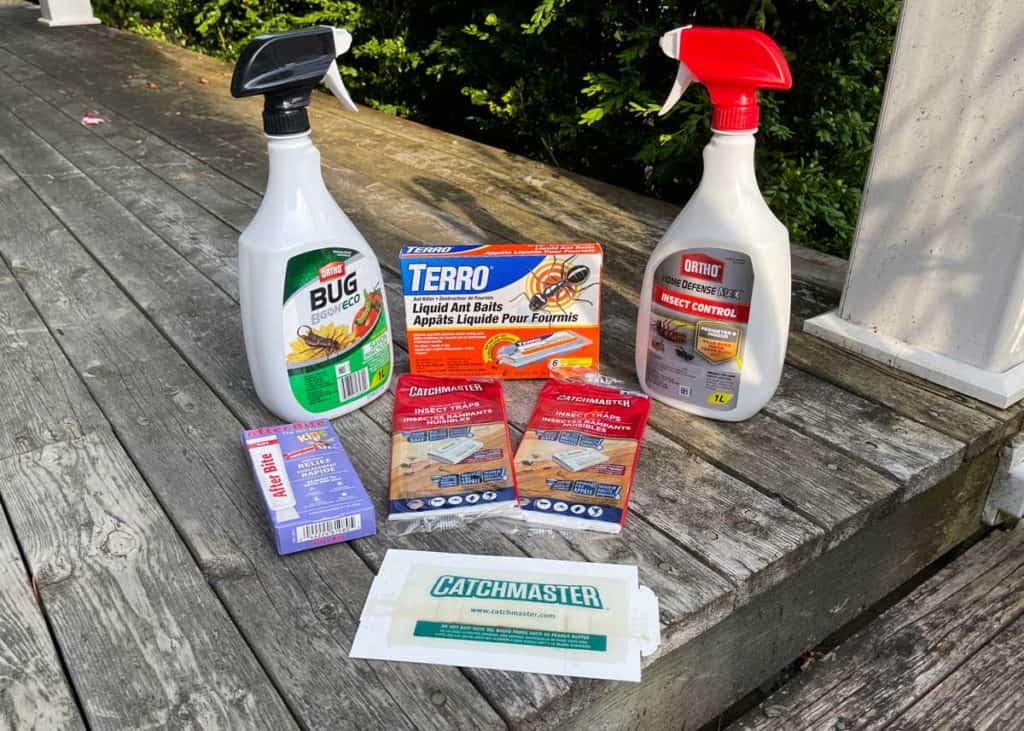
Your turn
Have you used both borax and boric acid to control roaches and ants? Which worked best for you? Please share your experience below.
- About the Author
- Latest Posts
Bryan Haines is a co-founder and writer at The Buginator. And is working to make it the best resource for taking back the outdoors from biting, stinging pests.
He also blogs about travel at Storyteller.Travel and photography at Storyteller Tech. Bryan is a partner at Storyteller Media, a publishing company he runs with his wife, Dena.
